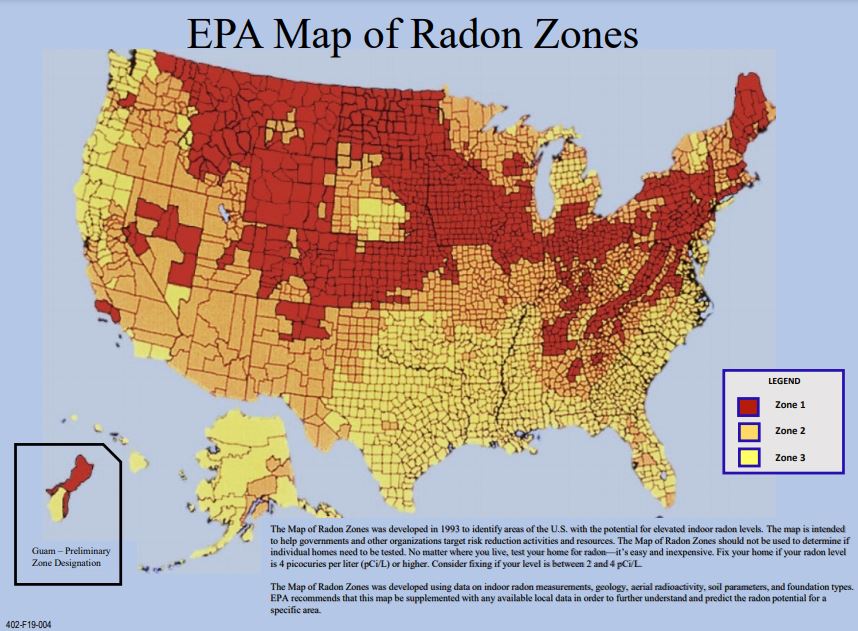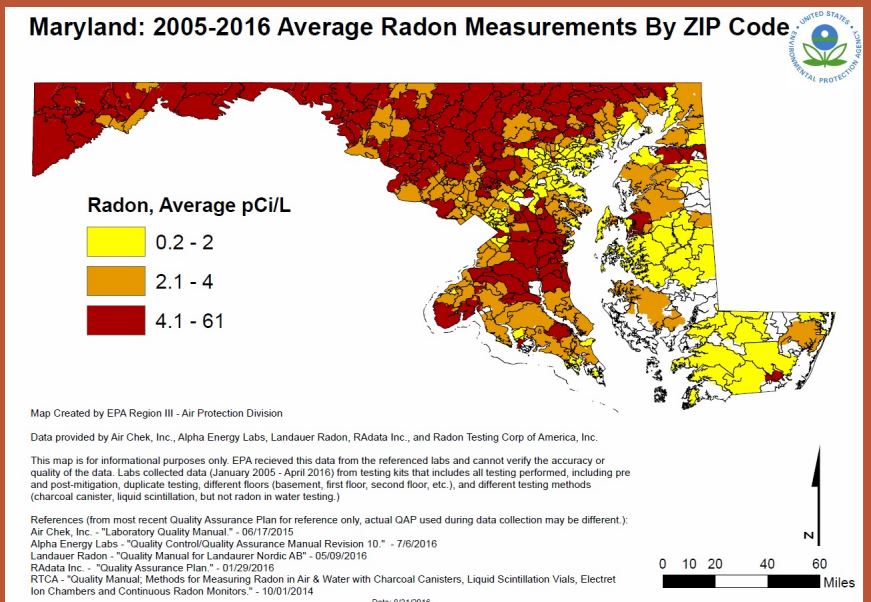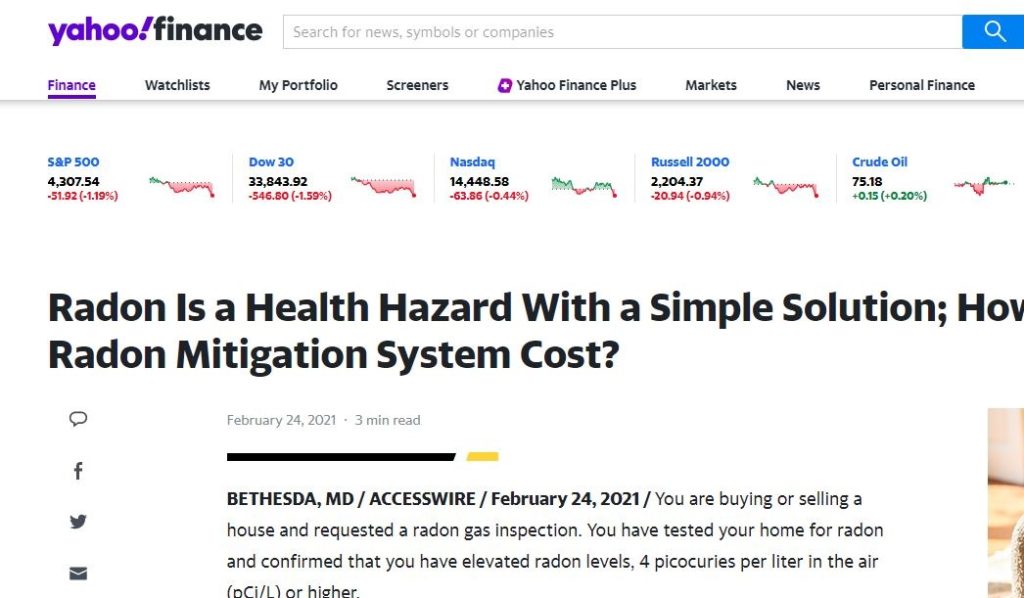FACTS ABOUT RADON
- Radon Is a gas
- It is naturally occurring
- It is inert and cannot be seen or smelled
- It enters buildings from the soil beneath them
- Radon comes from the radioactive decay of uranium 238
- Radon comes from the immediate decay of radium 226
- Much of the radon produced enters the atmosphere
- The concern with radon is when it enters a home
- Radon can enter all types of buildings, including schools and workplaces
- Radon comes from the area directly beneath building and a few meters around it, so it is very localized
- Some of the radon that enters a home also leaves through windows and other openings to the outdoors – the concern is when it accumulates in a home.
- Tight homes do not cause radon
- Although radon can come from man-made situations like landfills or use of radium containing building materials, the vast majority comes from the soil
- Radon is an unstable atom and will break down into a family of elements called radon decay products.
- Radon decay products have electrostatic charges.
- When you inhale you will breathe in both radon and radon decay products
- The radon is exhaled
- The radon decay products will stick to the lung tissue
- Before your lungs can clear the radon decay products, they can further break down an irradiate the lung tissue.
It is the radon decay products that actually present the health risk associated with radon gas.











